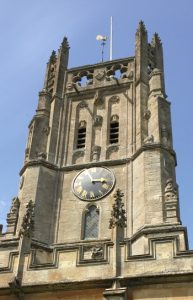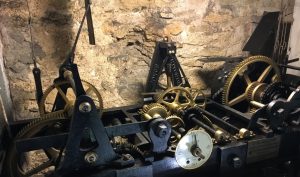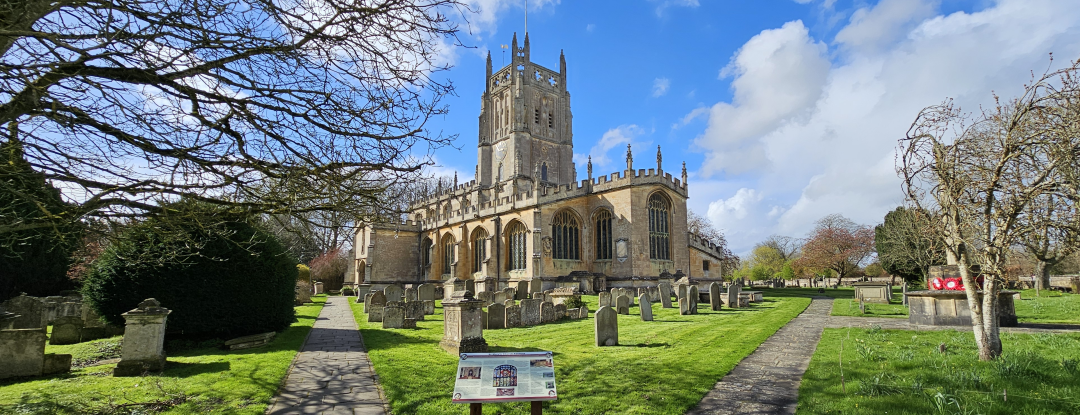 Fairford church, in addition to its famous stained glass windows, has a very fine clock. This high-quality clock, purchased by Colonel George Charles Porter in 1897 in memory of the 60 year reign of Queen Victoria, replaced a simpler mechanism which probably chimed only the hours.
Fairford church, in addition to its famous stained glass windows, has a very fine clock. This high-quality clock, purchased by Colonel George Charles Porter in 1897 in memory of the 60 year reign of Queen Victoria, replaced a simpler mechanism which probably chimed only the hours.
The clock was made by Joyce and Co. of Whitchurch, established in 1690, who claimed to be the oldest clock manufacturer in the world. In 1834 Thomas Joyce began making clocks for local churches and municipal buildings, including the famous Chester East Gate clock.
In 1849 the company copied the Big Ben escapement, designed by Lord Grimthorpe, and went on to build large clocks, both at home and abroad, for major public buildings and railway companies.
At St Mary’s church, the verger had to climb the tower steps daily to wind the clock. In 1973 winding became automated thanks to a bequest of £600 from Wallace Tarlton Fox, verger from 1949 – 1960
The Fairford clock has three gear trains, going, hour and quarters.
Each one has its own electric winding motor, actuated by a tilting mercury switch.
The clock has a Grimthorpe’s gravity drop leg escapement, a 1.3 second pendulum with a 1cwt bob. Regulation of rate is by small weights added to the pendulum rod.
The clock has to cope with a temperature range of 40 degrees, therefore despite its bi-metal construction of steel and zinc for temperature compensation, it does require regular correction.
Drive to the Hands is by shafts and bevel gears to the single dial on the south of the tower
The clock is mounted on a platform at the highest point in the SW corner of the tower. Access is made from a high-level entrance in the SE corner of the tower, via a spiral staircase to the bell platform and then by ladder to the clock platform itself.

Jake Sutton
Keeper of the clock
Updated 30th August 2024
